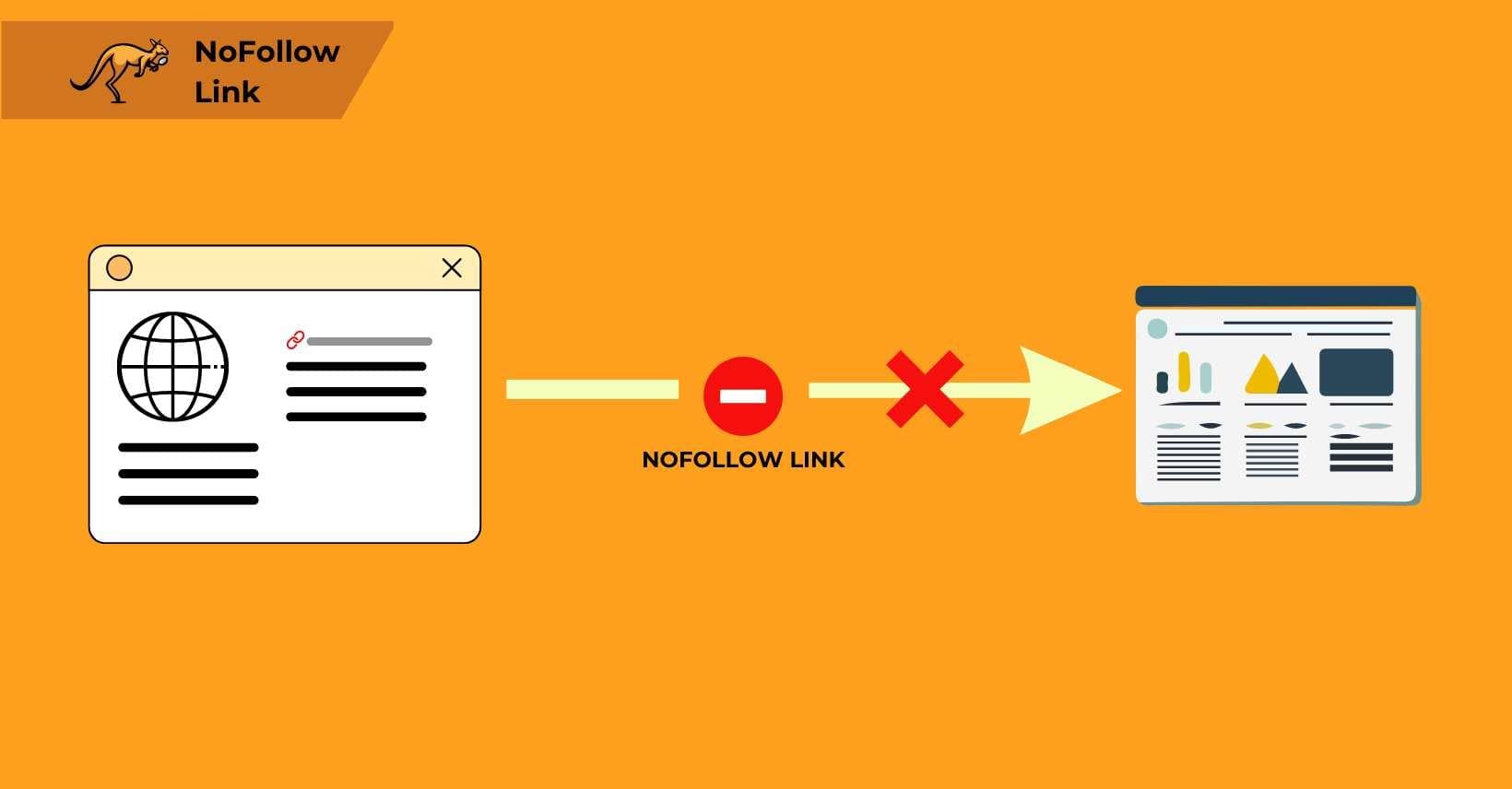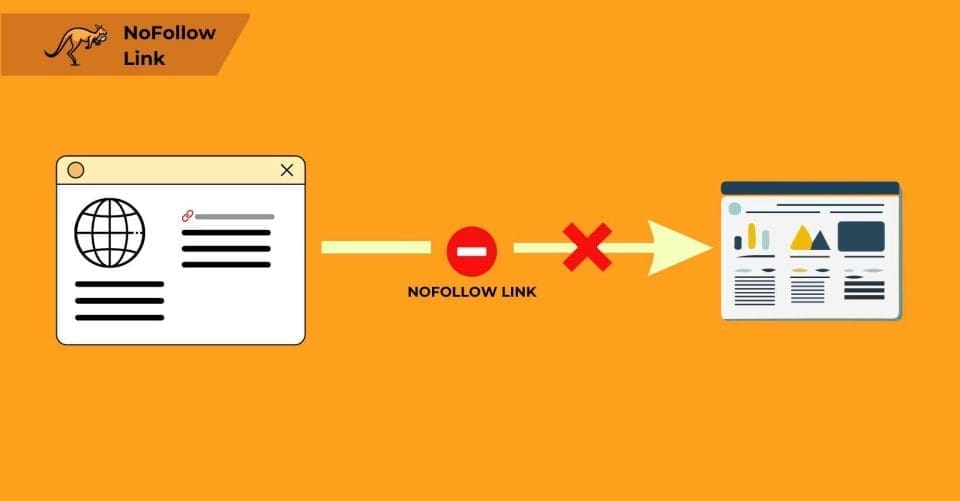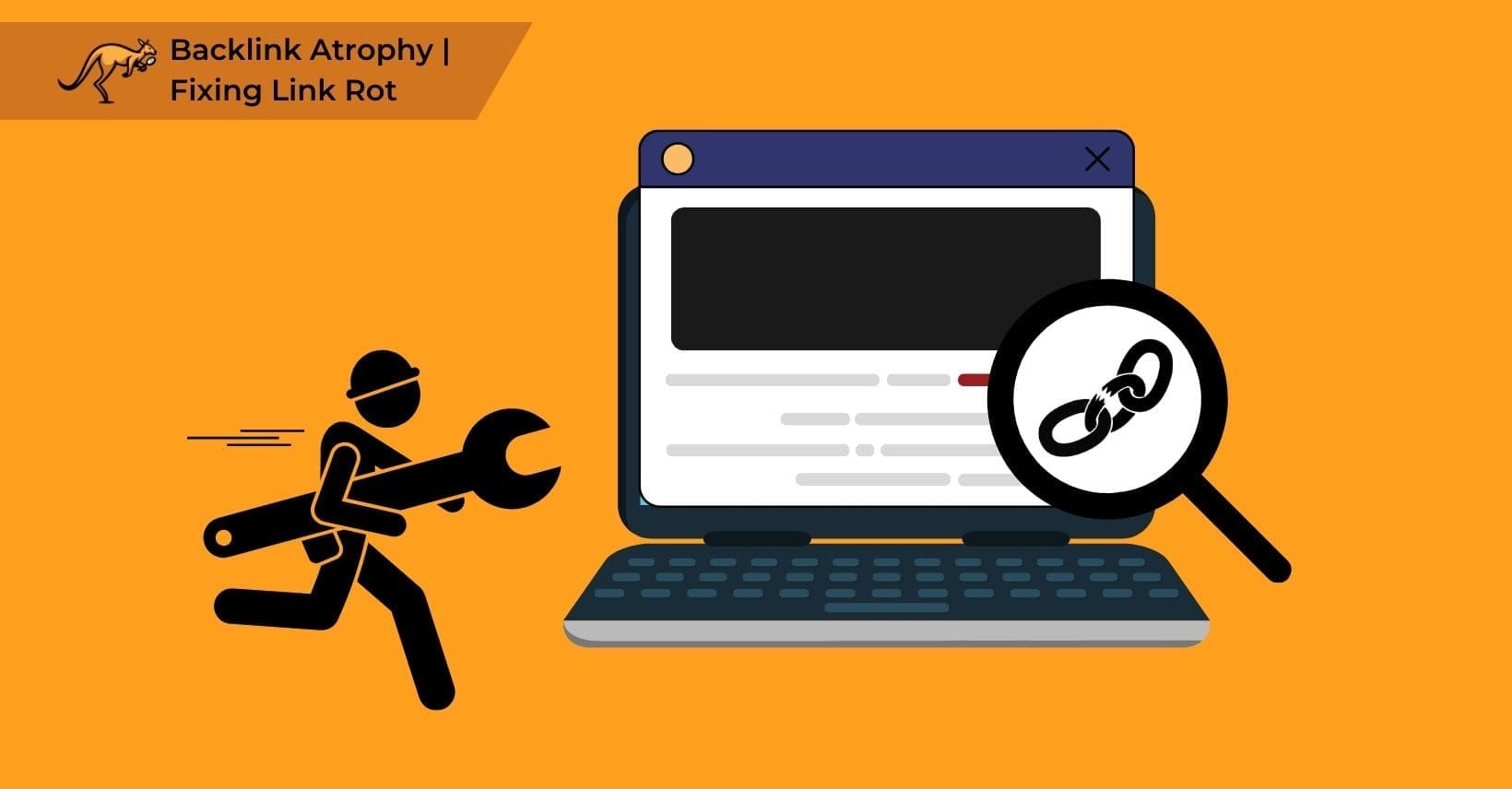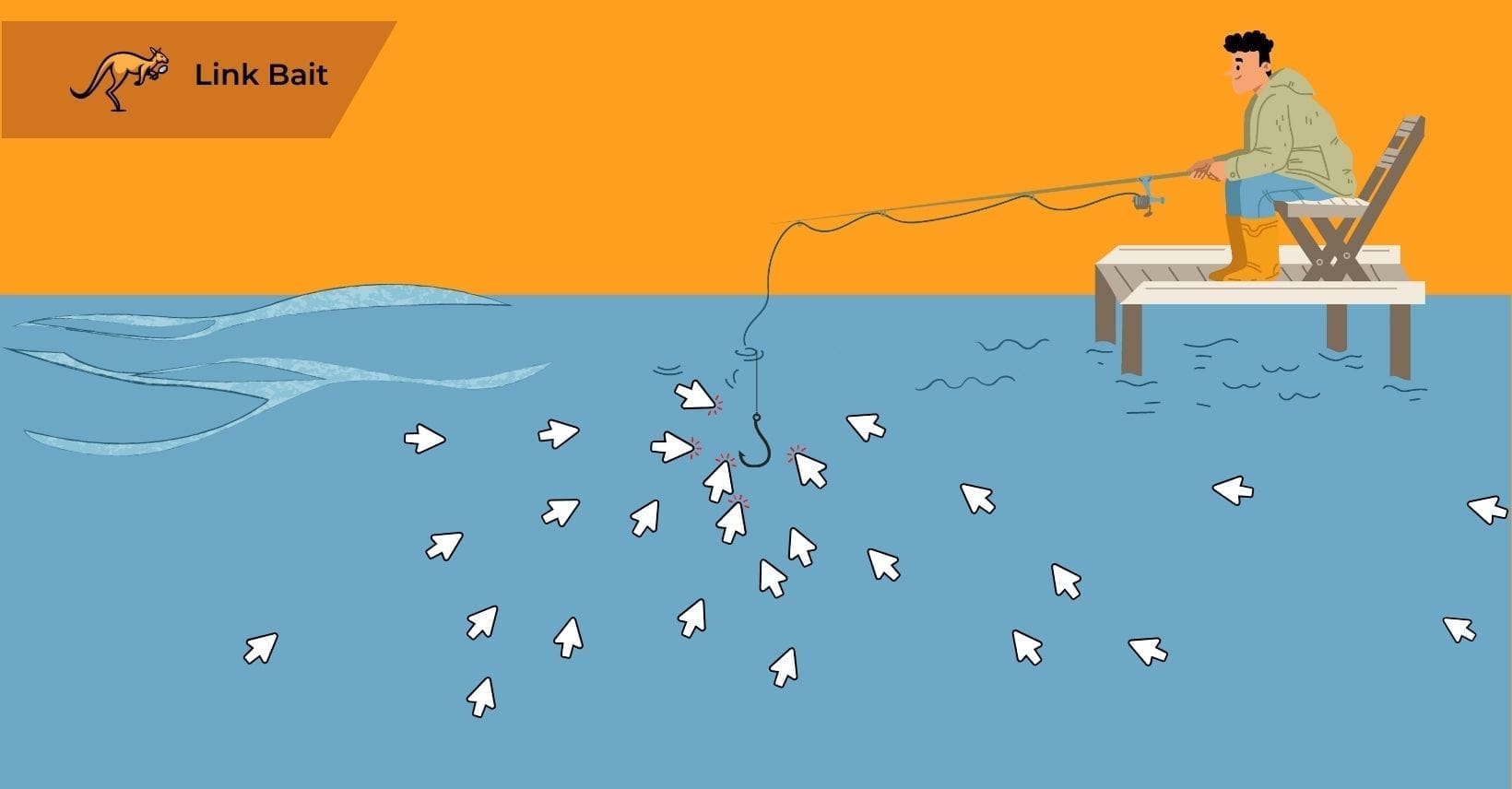Standing out on search engines is increasingly tough due to intense competition across all sectors. Websites must continuously vie for visibility on search engine result pages.
A key strategy in this battle is search engine optimization (SEO), which aims to boost your website’s rankings to garner more views.
A significant aspect of SEO involves the use of nofollow links. These links, when implemented strategically, can elevate your site’s visibility, helping you attract more customers.
In fact, most people start their search for products or services online, which means optimizing your website is essential for reaching potential buyers.
If you’re new to SEO, understanding different techniques, including nofollow links, can seem daunting. Let’s explore how nofollow links function and their role in improving search engine rankings.
What Are NoFollow Links?
A nofollow link is a hyperlink with a special HTML attribute that instructs search engines not to pass ranking credit to the linked page, which helps website owners control how search engines interpret connections between sites while maintaining normal functionality for visitors. SEO employs various tactics to boost your visibility on search engines like Google, Yahoo, and Bing..
Given the many results generated for any keyword, standing out online becomes challenging, often leading to missed potential traffic.
In the realm of SEO, nofollow links, part of the broader link-building strategy, play a pivotal role. This strategy involves managing internal and outbound links that affirm your industry authority and enhance your site’s search engine ranking.
Such links, spanning your content and external industry-related sites, establish credibility. They indicate that others view your site as a dependable reference.
The nofollow tag is an HTML attribute (rel=”nofollow”) that instructs search engines to disregard specific links, preventing these links from influencing your site’s ranking while still allowing users to navigate through them normally. Understanding when such guidance can prove advantageous may just change how you manage your site’s interaction with search engines. Understanding when such guidance can prove advantageous may just change how you manage your site’s interaction with search engines.
When To Use NoFollow Tag
Using a nofollow tag on certain links directs Google to disregard these links when calculating search rankings. Introduced in 2005 to combat spam and link manipulation, the nofollow attribute ensures that these links do not influence your website’s authority.
They neither contribute to nor detract from the SEO strength your site derives from other, more authoritative links.
While nofollow links look the same to visitors, affecting neither usability nor experience, their strategic use can be crucial for guiding search engines to prioritize your most relevant pages.
Employing nofollow tags can be especially useful for pages you prefer not to highlight, such as affiliate links or user-generated content that doesn’t necessarily reflect the quality or focus of your site.
Website owners should use nofollow links in several specific situations where passing link equity is undesirable or potentially harmful to SEO, which includes:
Links to pages that you do not want to endorse
The primary role of the nofollow attribute on your website is to instruct Google to disregard certain outgoing links. These links might connect your site to companies that do not share your values or relate to your niche.
By implementing the nofollow attribute, you ensure that these links do not influence your site’s ranking in search engine reports.
As you apply such attributes to manage your website’s linking strategy effectively, staying informed about different web partnerships, like those involving sponsored or paid links, is also wise.
Sponsored or paid links
A nofollow link serves the dual purpose of driving referral traffic while not influencing your Google link evaluation. Websites operate to earn revenue, often incorporating sponsored or paid links into their profiles.
These links might not always align with their intended public image. By utilizing sponsored nofollow links, websites can shield these links from Google’s ranking algorithms while maintaining referral traffic.
Such strategies illustrate the nuanced ways websites manage their financial and digital strategies—further discussions on monetization might delve into the use of affiliate links.
Affiliate links
Like selling links can enhance connections and drive referral traffic, affiliate links function similarly by directing users to products and services.
These outbound links enable website owners to earn income through recommendations. It’s important for these links to be dofollow to benefit the audience, although they might not always improve webpage rankings.
Employing a nofollow tag on such links signals to search engines that these are monetized connections, which shouldn’t influence the site’s ranking.
As website owners harness these tools to generate revenue, they pave the way for exploring the creative potential of user-generated content.
User-generated content
User-generated content, such as blog comments and forum posts, originates from visitors to your website. Implementing nofollow links for these can prevent them from skewing your site’s natural link profile and block the passage of PageRank. This measure ensures that the quality of your link environment remains untainted. Maintaining such practices is crucial, especially when the usual nofollow approach might need reconsideration for optimal SEO health.
When To Avoid NoFollow Links
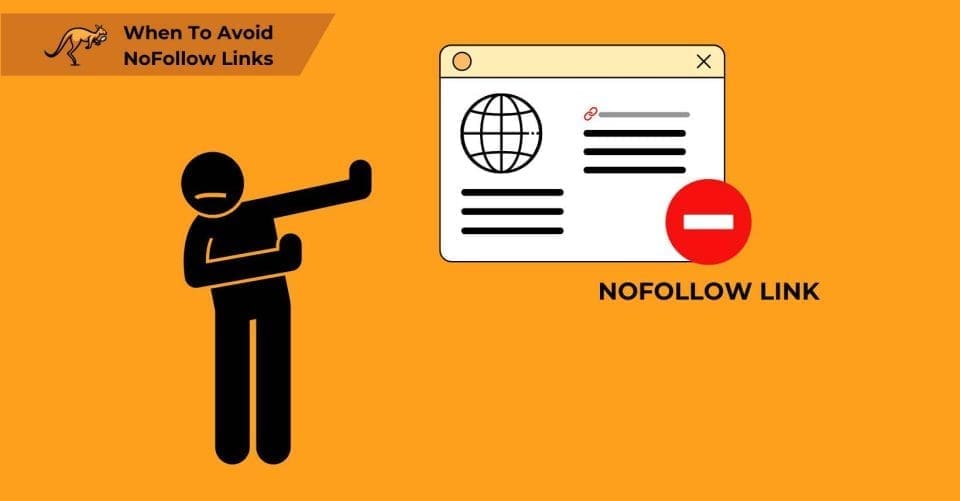
Using nofollow tags can enhance your SEO efforts by allowing you to manage how search engines view your links. Google issues penalties for websites engaged in link schemes designed to manipulate rankings through its PageRank system.
Nofollow links, therefore, help adhere to Google’s WebMaster guidelines by not influencing your site’s ranking through manipulated links.
It’s crucial not to overuse nofollow attributes; not all links should carry this tag, as it could negatively impact your site. Standard nofollow links include those in comments, which are tagged noindex, as they don’t contribute to page rankings.
For paid content, like sponsored links, applying a nofollow tag indicates the promotional nature of the link.
Maintaining a balance between nofollow and dofollow links is key to optimizing your site’s presence in search results.
To ensure the best results when using Google, you should avoid no-follow links with:
All external links
Using “nofollow” attributes on outgoing links, like those in guest posts or press releases, can negatively impact your SEO performance.
These links are vital for demonstrating your expertise in a particular area. They can improve your ranking on search engine results pages. Recognizing the value of link-building through guest posts is important for search engines.
As we consider how to use internal linking strategies effectively, it’s helpful to remember that structuring these connections wisely on your site also plays a crucial role in optimizing your web presence.
Internal links
Internal links should generally not be nofollow because they help distribute link equity throughout your website, which strengthens your overall site architecture. However, if your brand’s focus has shifted or you wish to distance yourself from certain past content, using the “rel=nofollow” attribute alone may not suffice.
Instead, consider other methods like meta tags to prevent these unwanted links from being crawled and indexed without harming your SEO.
Since Google’s inception, nofollow links have played a role in ranking web pages. Through Google’s PageRank algorithm, pages are scored based on quality, ranging from zero to ten points.
Pages that fail to use nofollow tags appropriately might see a dip in their PageRank score, which can affect their search engine ranking.
Properly managing your HTML’s “rel” attribute is crucial for maintaining a high-quality link profile. Knowing when to use a nofollow link is key to optimizing your site’s performance in search results.
Following up on this, one might also need to know how to check for nofollow links to ensure their correct implementation and refine their SEO strategy.
How To Check NoFollow Links
Crawling nofollow links on blogs or web pages helps verify correct attribute usage, which is essential for maintaining your site’s SEO integrity.
The difference between nofollow links and regular (dofollow) links lies in their effect on search rankings: nofollow links, marked by a “rel nofollow” attribute in the HTML code, do not pass SEO credit to linked pages, whereas dofollow links, which lack this attribute, transfer ranking value and contribute to the linked site’s authority in search engine algorithms. This distinction determines how search engines evaluate connections between websites.
Auditing these links allows you to assess whether an alternative HTML attribute could be more beneficial for your link-building efforts.
You can check for nofollowed links on any web page, To add a nofollow attribute to a link, you need to insert rel=”nofollow” into the HTML anchor tag, which looks like this: <a href="https://example.com" rel="nofollow">Link text</a>. This code modification prevents search engines from following the link while maintaining its functionality for website visitors.This code modification prevents search engines from following the link while maintaining its functionality for website visitors. guest post, or blog post through the following steps:
- Find your selected page on your website
- Right-click on your browser to launch an options window
- Click ‘View Page Source’
- Look in the HTML code for the particular link you are interested in
- If there is a rel nofollow attribute, this is a nofollow link. Without the rel nofollow, these are do-follow links
Tools like Chrome extensions, browser developer tools, and specialized SEO software can help identify nofollow links on any webpage, which allows webmasters to audit their link profiles effectively and understand their impact on SEO. This knowledge aids in optimizing link value and preparing for further exploration into additional link attributes that could enhance your site’s performance.
Other Link Values To Know
In 2019, Google introduced two new link attributes: rel=”sponsored” and rel=”UGC.” These provide alternatives to the traditional nofollow tag for website owners who want to indicate which links are paid or user-generated without affecting their search engine rankings.
By marking paid links with the sponsored attribute, owners signal that these links are advertisements.
Similarly, the UGC attribute is designed for links from user comments or posts, highlighting that this content is generated by users rather than the site owners themselves.
These tools give website owners more flexibility in managing their SEO and help them avoid penalties by marking links appropriately.
As they incorporate these options, they can enhance their strategies for search engine optimization.
Speaking of enhancing SEO strategies, it’s worth considering how even nofollow backlinks can contribute to a site’s search visibility and authority.
How NoFollow Backlinks Help SEO
Search engine optimization (SEO) enhances a website’s performance on search results. It involves various strategies, including link building, which significantly influences SEO.
A nofollow backlink is a link from another website to yours that contains the rel=”nofollow” attribute, which instructs search engines not to pass ranking value while still directing potential visitors to your content. Both nofollow and dofollow links constitute your link profile, which Google uses to assess your domain’s authority.
Higher domain authority leads to better search rankings and broader reach.
While nofollow links are excluded from your link profile’s “link juice,” they still provide SEO benefits by avoiding penalties and maintaining site authority.
Understanding the use of nofollow links is crucial for effectively managing your website’s SEO.
Nofollow backlinks help SEO by providing indirect benefits that extend beyond direct ranking signals, which makes them worth developing as part of a comprehensive link-building strategy that includes:
Traffic
Even if a nofollow link points to your website from other sites, it won’t affect the traffic you receive. A nofollow link, designated only for search engines like Google, still looks like a regular link to visitors.
This rule applies to all websites, including those like Forbes, that use nofollow tags for their external links. Importantly, even if Google doesn’t track the link from Forbes, your site may still gain substantial traffic, indirectly enhancing your SEO.
This interaction underscores the value of visibility and leads us to consider the effects of exposure on your site’s visibility.
Exposure
Even when search engines don’t recognize no-follow links, they still catch the attention of potential visitors. Featuring your website on a site with high domain authority enhances your visibility and drives more traffic your way.
This increase in visitors can boost your ranking in search results, fostering continued growth. The importance of a varied backlink profile becomes apparent as we examine how diverse backlink sources contribute to a stronger online presence.
Backlink profile diversity
Nofollow links contribute to backlink profile diversity by creating a natural link pattern that search engines recognize as authentic, which strengthens your overall SEO profile. A diverse backlink profile indicates your industry relevance, reliability, and authority, influencing your search engine ranking positively.
Featuring high-quality sites within your niche via backlinks showcases your site as recommendable. Even nofollow links, which don’t pass on SEO benefits, still offer substantial value to your brand.
Navigating the Basics of Nofollow Links in SEO
Link building is a vital part of SEO, and it can be a useful tool to garner more attention online.
Any standard search will lead to thousands of results, and it can be difficult to get noticed within this.
This process is a way of showcasing relevancy and domain authority, which will then lead to your link being showcased higher in results. The higher you rank, the more people see your website and the more money you can make online.
In your bid to develop a comprehensive link profile, there may be some connections that do not represent your brand well or that you do not want to contribute to your ranking. This is where a nofollow link comes in.
Nofollow links are those which are tagged with a specific attribute to prevent Google bots from following them. With the nofollow tag, these links are essentially ignored and are not considered in the indexing of your site.
Site owners can control what is shown on their website using tags like nofollow, but there needs to be a careful balance met for the best results.
As with many other SEO techniques, overusing nofollow links can result in penalties from Google and may cause more issues than you imagined.
When used correctly, however, nofollow links are incredibly useful to the website owner and can be a great way to attract more internet traffic.
